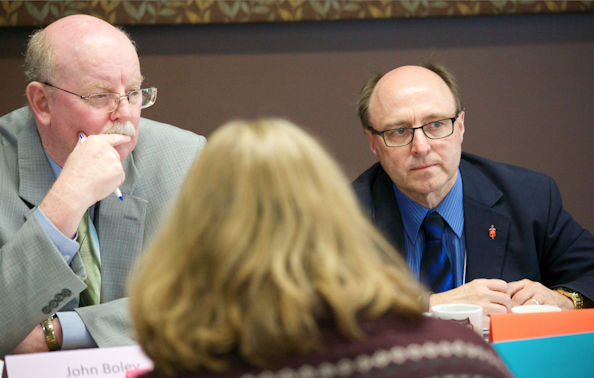Listening sessions are scheduled for feedback on the nine-district proposal.
LANSING MI, February 15, 2017 — Following more than two years of strategic discussion with clergy, laity and district leadership, in addition to numerous public listening sessions across the state, the Michigan Area Design Team will soon submit a proposal for district structure of the new Michigan Annual Conference for approval at the Annual Conference in June 2017.
The proposal, recommends the new Michigan Annual Conference consist of nine districts with an equal number of District Superintendents and Administrative staff. The Michigan Area currently consists of 12 district offices led by 11 district superintendents. The new structure, if approved at the Annual Conference, would go into effect on July 1, 2018.
The Design Team has organized three listening sessions for discussion of this district plan to be held as follows:
Listening session #1: Wednesday, April 5 at West Branch First UMC, 2490 State Road, West Branch, 7 to 9pm
Listening session #2: Thursday, April 6 at Jackson: First UMC, 275 W. Michigan Avenue, Jackson, 7 to 9pm
Listening session #3: Tuesday, May 9, Webinar in Lansing at the Michigan Area Ministry Center, 1011 Northcrest Road, 7-9pm
“We are looking to do a new thing with our districts in Michigan,” said Design Team Co-chairperson Marsha Woolley. “We see the primary focus of the district being the connecting and equipping of clergy and lay leaders and local churches in the fulfillment of the new conference mission and vision,” Woolley added.
The Book of Discipline gives the responsibility of forming districts to the Bishop. Bishop David Bard will establish a process to finalize geographic boundaries, office locations and district names of the new Michigan Conference after public feedback is received and the nine-district proposal is approved at the Annual Conference.
During the development of the plan, a wide-range of options was considered and the final plan was based on distance, mission directives, and the number of churches served. The intention was taken to ensure that the geographic boundaries, for the most part, would not duplicate current district lines. The United Methodist Book of Discipline and Judicial Council rulings also provided some guidance on the proposed structure. Any financial savings from the consolidation of districts would be used to fund staffing strategies, projects, and initiatives that directly benefit the local churches and increase capacity for the work of the district.
The final proposal will be posted to Design.MichiganUMC.org on April 15. Comments can be sent to the Design Team at Designteam@miareaumc.org.
Last Updated on January 12, 2023

